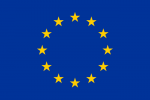In the beginning, there was a proposal, outlining the main goals and functions of a mobile application for our citizen science project. The project and the actual system development then started by defining the scope of the app and its functionality, collaboratively between all consortium partners. The original project proposal for the European Commission was our point of departure. It defined an “application to monitor the personal energy mix and inform the user” and described functionalities, such as collecting data on a user’s energy behaviour, implementing a labelling system, and providing the application translated into all local project languages. Also, data privacy and security aspects had to be discussed with great care. The proposal, therefore, provided a great starting point to guide the project in the right direction. Yet what would be the next steps?
Jointly, the AURORA project consortium used the pointers from the proposal to build a list of features the app should provide. At this stage, anything was allowed to be discussed. Pros and cons of the underlying technology and the programming process itself were discussed, and several features beyond the originally-foreseen scope were suggested. As a citizen science project, we focused particularly on the future user experience design and the ways data would later be entered by the citizens. Keeping the AURORA project goals in mind, it became clear that it would not suffice to use an existing app, as the vision of AURORA and its unique requirements, such as solar power crowdfunding, were too radically different from anything out there. The project therefore decided to create its own app, which would, among other features, include tracking for three major categories: heating, electricity, and transportation. Users would somehow provide their personal usage data for these categories and then, again somehow, have a label attributed to their performance. Over time, they would be able to improve their label by providing more recent information on their reduced energy consumption. A list of features was developed and an internal project vote was taken to prioritise them. Features endorsed by most colleagues were then added towards the top of a more clearly defined development roadmap, while other features were ranked to be implemented at a later point. Later implementations will depend on the project’s available resources.

However, at this stage, the project had only collected its ideas and prioritised its plans. While the consortium consists of expert partners, it was only prudent to ascertain what potential users – those outside the project consortium – were thinking about the plans so far. AURORA therefore systematically started involving citizens in the five demo-sites to conduct so-called “Innovation Cafés”. You can read more about this in the second part of this article series (“Behind the Scenes”). The project gained many valuable insights through these co-creation workshops, which allowed us to compile a final development roadmap. This document now had all the details that the developers would need to start programming. To code an early alpha version for internal testing, as soon as possible, all features were ranked by importance. Functionality such as registering an account or tracking consumptions for each category was considered particularly urgent. It was also decided to develop the app natively for both the Apple operating system iOS and respectively for the system running on most other smartphones, Android, as this would result in a better user experience, compatibility, and system performance.
The iOS version was addressed first because any changes in the beta version would otherwise need to be made for both iOS and Android separately. Ironing out issues with one version first would therefore save resources, and after a few rounds of internal testing of the iOS app (read more in the second part of “Behind the Scenes”), development of the Android app started. As all major questions about the User Interface design and the implemented functions had already been answered during the development of the iOS version, the development for Android could be streamlined, so that this version quickly comprised the same features as iOS.
After further discussion, involving the user community and development efforts, AURORA is proud to present its “AURORA Energy Tracker”, now available for both Android and iOS on Google Play and the Apple App Store respectively.

Author:
Lars Lorenz
Institute for Science and Innovation Communication (inscico)
Germany



